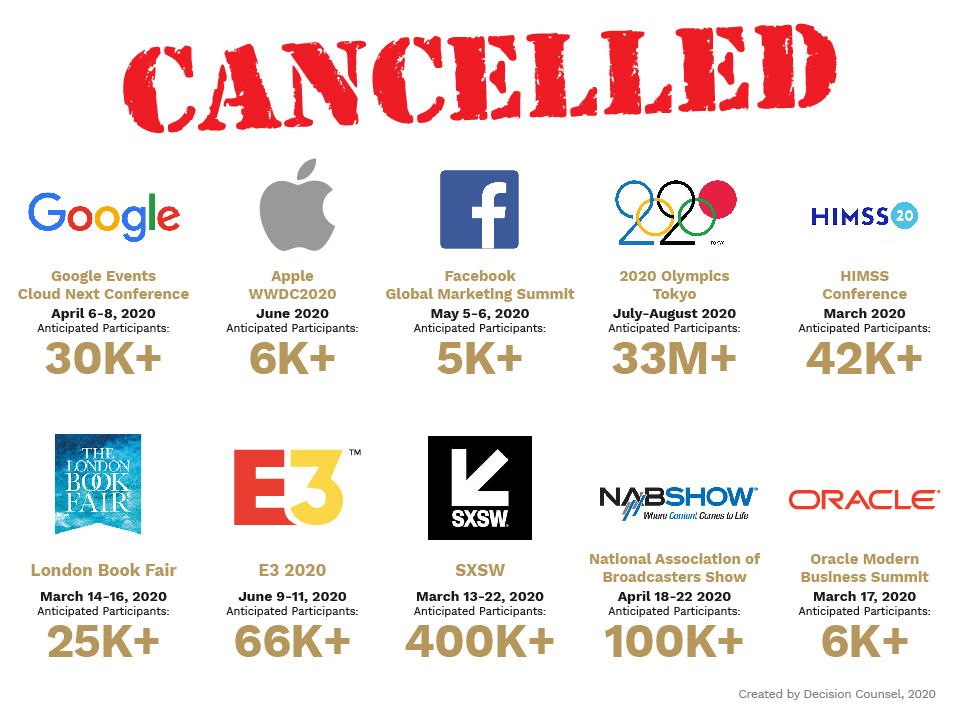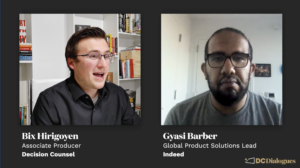Our current business environment has spurred examination of many of our conventional business behaviors but none may be more crucial than Revenue Continuity. B2B Enterprises spend billions on business continuity strategies. Data Centers are redundant, supply chains have contingency strategies, and security monitoring is a daily occurrence. So it begs the question, why do many B2B enterprises ignore one of their most critical assets, top line revenue?
If the current business disruption has exposed anything, it has revealed that too many B2B organizations still have a disproportionate percentage of revenue driven by classic outside sales models and a substantial amount of leads being driven by physical events. The COVID crisis has also revealed that even companies who invested heavily in sales and marketing tech stacks are exposed. A lack of rigor surrounding account strategies, forecasting and digital communications has left their revenue pipeline exposed to rapid degradation. In short, they have no Revenue Continuity strategy.
This disruption has changed everything.
Over the course of the past few weeks, we have seen SAP, Intel and Apple all announce virtual versions of their flagship events. According to Forbes, more than 35.3 million people who were planning to attend an event have been forced to change their plans in recent months. But more than entertainment has been affected. No market has gone unscathed.

To be sure, business disruption once considered unthinkable is now a reality, so how should B2B sales and marketing leaders respond? By making the changes we have all been considering but have been reluctant to go all in on.
- Immediately adjust your pipeline reliance on leads driven by industry events and in-person sales experiences. Your sales and marketing team must have the ability to fulfill 100% of your top of funnel leads via marketing efforts that do not require physical presence. (web, app, social, streaming, broadcast, etc) Everyone loves a good roadshow, analyst briefing or battleship event but it can no longer be a primary driver of your lead generation strategy.
- Invest heavily in preliminary business analytics to define very specific account acquisition, retention and growth metrics. Very few enterprises possess an approximate understanding of how many new accounts are available in market, their exposure to account losses and potential upside in their existing account base. A commitment to in-depth customer segmentation and propensity modeling will improve your marketing ROI, lower the cost of lead acquisition and improve the performance of your sales efforts over time. The reality is that you probably can focus on a smaller set of core opportunities to drive your new customer acquisition. The improved focus will optimize investment, allowing you to spend more money on the client opportunities that really matter and retain customers considering moving to a competitive offering.
- Build a deep expertise in world class (we mean entertainment/video game/radio/streaming) content. Face it, people consume content they enjoy and if yours is boring and pathetic, they will ignore it. Create demos that delight, videos that engage and podcasts that are worth the 3 to 5 minutes. This comes down to talent, investment and understanding the medium. This represents a serious investment shift for most marketing departments. Those $2000 animated videos your admin creates is not going to cut it. A generic me-too virtual conference platform? Nope! As more and more of the sales nurturing process is done digitally, the greater the burden will be on sales and marketing organizations to improve the quality of the content experience. Partner with an agency, build a great content team or ask your media partners to help. But get it done sooner than later.
- Generate a digital experience strategy for user conferences, major project announcements, and support of industry events. Over the course of the past few weeks, we have seen SAP, Intel and Apple all announce virtual versions of their flagship events. Yes, those are all tech examples but lets face it, they are great examples of best practices. The future of online experiences needs to look more like a great sporting event broadcast and less like a bad simulation of a trade show floor and booth. I encourage everyone to take a peek at the online experiences created for the past Olympics and NCAA national championship game. The new experiences need to accommodate a blend of analogue and digital supporting multiple video feeds, social interaction and on-demand exhibitor experiences.
- As a side note, demand that your existing physical event partners evolve their online experiences as a more robust extension of the brand experience and not as a cute afterthought. Many B2B media companies have been caught flat-footed by the cancellation of physical events. Their revenue models relied too heavily on event revenue and not enough on data driven services like research, analytics and Account Based Marketing Programs.
- Realign your sales structure and processes to embrace the efficiencies and opportunities represented by new applications and consumer behaviors.
- Invest heavily in business development managers who do in-depth account research, build robust account profiles, and research key business activities for their territories. The in-depth profiles will improve content marketing relevance, improve data driven marketing and shorten the sales cycle. Why is this important? Here is one example, nobody is working from their office so you can’t call them there and they won’t get direct mail. If you don’t have mobile phone numbers or solid email addresses you are dead in the water.
- Use the new economies of selling to change your outside sales behaviors and sales team mix. Nobody should get on a plane for a standalone meeting with a $10K a year account. This is a perfect time to reexamine your customer mix and average revenue per account. Adjust your mix of outside sales and inside sales representatives to focus your most accomplished and senior sales executives on large opportunities that warrant their compensation and expense levels. The transition to transactional relationships that are nurtured by technology, community and content has been difficult for more traditional, relationship driven sales executives.
- Demand proficiency in the digital sales toolkit. Can your inside sales representatives all conduct an online chat session directly from the website? Do all of your outside sales representatives know how to run an online demo over a video conference application? Does everyone on your team know how to construct an informative text or LinkedIn message instead of a wordy email? There is a new Lingua Franca out there and your sales team needs to speak it.
- Incent, enforce and monitor team discipline surrounding the use of sales force automation, CRM and digital marketing platforms. The days of letting a meeting report slide or letting poor contact data clog your systems has to end.
- The entire sales and marketing team needs to realize that in the new world order data and insights are success fuel. It is literally the difference between winning and losing. The data is the foundation of resiliency, you cannot build a revenue supply chain without it.
According to Forbes, more than 35.3 million people who were planning to attend an event have been forced to change their plans in recent months.
Techcrunch
It’s important to clarify that I do not expect physical events and outside sales activities to disappear, but their strategic role in your sales and marketing strategy should evolve. Events are probably best suited for thought leadership, product announcements and industry relations more than primary lead generation. Outside sales teams need to focus on very high value relationships that justify their premium cost. What has become obvious to me that B2B enterprises have to have a Revenue Continuity strategy. They cannot afford to have their revenue streams dependent on a transactional model that requires face-to-face interaction that can be disrupted by numerous factors. The COVID crisis is a business accelerant, we thought we had more time to make these strategic changes. We were wrong but at least we have a path forward.
It should be interesting.



